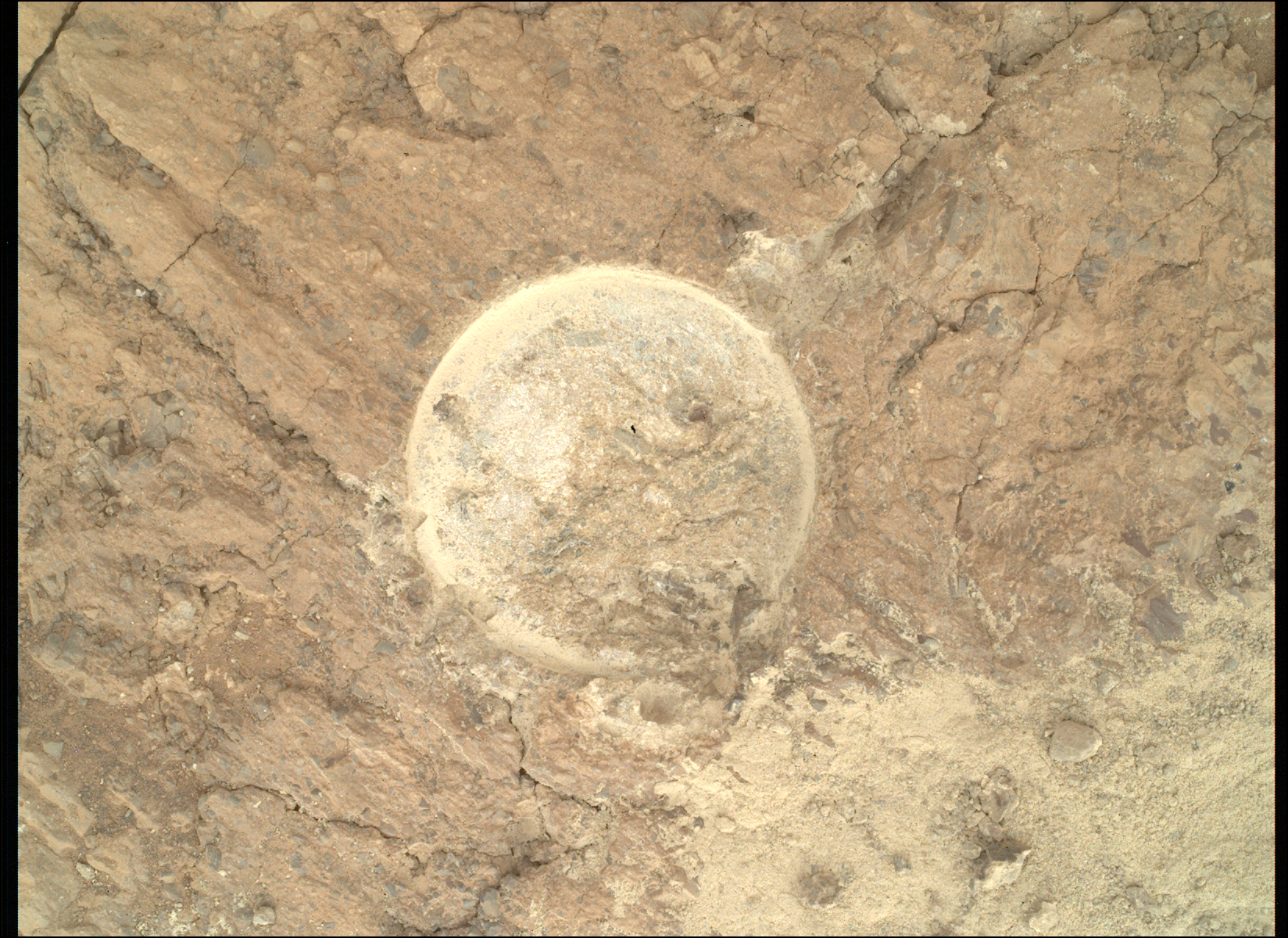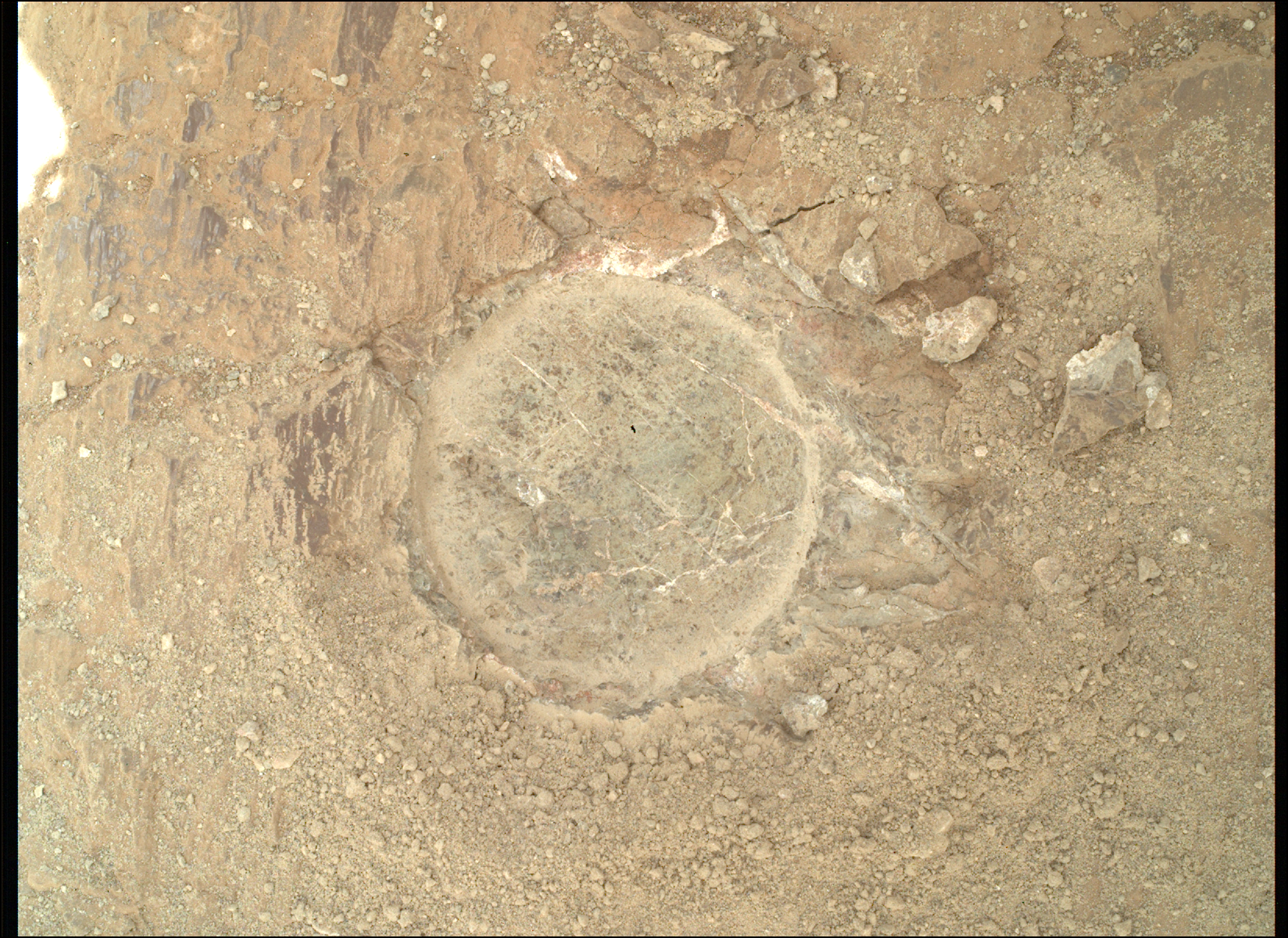- Perseverance Home
- Science
- News and Features
- Multimedia
- Mars Missions
- Mars Home

Written by Melissa Rice, Professor of Planetary Science at Western Washington University
Perseverance accomplished something unusual this week: abrading two dramatically different rocks within the span of a few days. While exploring the Vernodden area along Jezero crater's rim, the rover has been studying what might be "megablocks," a variety of ancient crustal materials with clues to Mars' early geological history.
The target "Peachflya," abraded on sol 1618, revealed clasts of different mineral compositions. This could mean the rock is a breccia formed from fragments of even older materials that were broken up, transported, and cemented together - possibly during an impact in Mars' distant past.

Just meters away, the target "Klorne" was abraded on sol 1623 and it tells a completely different story. The fresh surface is greenish, with some dark spots and white veins-evidence of significant chemical alteration. Klorne's green hue is consistent with the mineral serpentine, and reminiscent of Perseverance's abrasion of "Serpentine Lake" back on sol 1404.
Next, Perseverance will examine the "Monacofjellet" megablock, which shows yet another distinct spectral signature. Each of these ancient fragments can help the Science Team reconstruct the complex geological processes that shaped early Mars billions of years ago.






